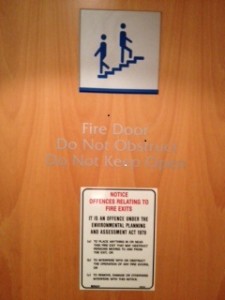Catalogers and other offline marketers have many advantages when it comes to eCommerce. Unfortunately, most of them don’t leverage their benefits. What’s even more demoralizing? They often turn their positives into BIG negatives.
No, I’m not being a Negative Nelly here. Ass-y Amy? Perhaps. That’s always a fair assumption.
But I digress…
I started my direct marketing career in the mail order world and I will always have a soft-spot for catalog and two-step companies. There was nothing like opening an envelope filled with cash – yes, cash — from some little old lady 38 states away wanting a pack of greeting cards and a refrigerator magnet from the stationery company I worked for at the time.
So yes, despite the somewhat obnoxious, linkbait-y title, if you’re a cataloger – or any legacy company, for that matter — here are some of the biggest mistakes I see AND more important, tried-and-true ways/solutions for you to fix them.*
Mistake #1: Underestimating the value of direct/no referrer/branded traffic.
Sure-Fix #1: The people who know you – the ones who are typing in your company name or branded keywords – are more valuable than the ones who aren’t. Period. The direct/no referrer/branded folks have the highest propensity to act. Granted, sometimes the actions are customer service-related (tracking an order, for example) but still… The people who know you? They’re your gold. The center of your bullseye.
Put them in their own bucket. Study them. See where they are exiting. (Remember, people typically choose to exit within 3 pages BEFORE they actually exit.) Look at what they’re searching for. Find out what they’re doing. What they’re using. What they’re not. If you’re like most companies, you should develop an entry page specifically for the direct/no referrer/branded folks.
I know. I know. This tip sounds easy but less than 1 out of every 10 companies I visit actually does this.
The interesting thing is that when you do it (separate them into the proper buckets), you’ll see a lot of trends. You’ll find those are the folks who do things like type in item numbers, use your recommendation engine or go into their order history trying to find a quick and easy way to reorder. You may also find that they’re the ones who are likely to use the phone as the ultimate ordering channel – they come from a catalog, snoop around for the best deals/promo codes, look at your new stuff and then call in and place their order. If this happens with your business, make sure you put your phone number all over the place – especially the cart/checkout and search functions. As always, I recommend using special 1800# numbers for this kind of stuff – they’re inexpensive and not only are they good for your tracking but they’re good at getting your customers to the right place faster.
Mistake #2: Basing your navigational structure around your catalog categories.
Sure-Fire Fix #2: Just today, I’ve seen first aid kids under “Children” (should I alert CPS?); socks under “Novelties” (from an apparel company that puts scarves and mittens under “Accessories” but socks elsewhere); vibrators under “intimate solutions” (which, incidentally, was buried under Health and Beauty); candles under Outdoor (even though they only sell indoor candles, not a citronella in sight); and Jams under Preserves, which was under Favorites but not Food even though Jellies was under Food, not Favorites. (Heaven knows where the marmalades are — I couldn’t find them and they are one of that particular store’s most popular items.)
Here’s the thing. Users don’t want to search for anything. THEY WANT TO FIND SOMETHING. I’ve said it here before and I’ll say it again, navigation (including your text search function) is one of THE biggest determinants of your online success. Sure, you can say that nobody cares about navigation and everybody uses the text search – but you’ll be sorely mistaken. In usability, you find that unless users know precisely what they are searching for and/or are sophisticated users, they’ll try using the navigation first ESPECIALLY if they are browsing/shopping or have had a bad experience with your search function or any of the half dozen or so they’ve used before it. (Research shows that the site(s) immediately before the user came to yours has/have a direct impact on your success.)
My recommendation to you? Work your navigation but work it as if your sole goal was to sell the products and not to just put the catalog/offline products on the web. Name the products what people are searching for – if they’re calling it a raincoat, don’t call it a poncho. If they’re calling it a shirt, don’t call it a blouse. If it’s a bestseller, don’t bury it under some innocuous category like “accoutrements” or “selected features.” Also, be sure to make the categories indicative of what people are looking for – if you’re only selling PATIO FURNITURE, you needn’t bury it under GARAGE/OUTDOOR. Be clear. Be specific.
Mistake #3: Not offering “Ordering from a Catalog?” tools.
Sure-Fix #3: Most companies do two things incorrectly when it comes to this valuable section. First, they’ll call it QUICK SHOPPE or something equally useless when they should be showing a picture of their current catalog cover and saying “ORDERING FROM A CATALOG?” Second, and even worse, they’ll take the whole section off the site altogether because “we tested it in 1998 and it didn’t work.” Newsflash: 1998 was SIXTEEN YEARS ago, things are just a little different now. Not to mention, your ORDERING FROM A CATALOG? section won’t work on all your traffic – it will ONLY work on potential catalog traffic. So, if you know I’m coming in from a referral link on one of your affiliate sites, chances are you don’t need to show it. For the record, your email sign-up should function the same way. If you have my email address, you really don’t need to push a pop-up in my face asking for it again – you can use that space for something more valuable.
Mistake #4: Dumping all your new products on the web at the exact same time.
Sure-Fix #4: Yeah. I get it. You put your new items in your new books x times a year in one big batch. That’s cool. FOR. THE. CATALOG. But let’s be honest here, it’s a lot easier to promote stuff in a new book than it is on the web, right? You give the item you want to bet your house on, the front cover; the item you’ll bet your car on, the back; maybe your smartphone (your kids?) on the inside front; and so on. The web is different though – chances are, you’re more socialist on the web and probably a little lazier too – all the new stuff gets dumped in one fell swoop in a New section or put in your regular categories with dinky NEW bursts. (The only thing more predictable than that particular pattern is the one where the majority of the products move directly from NEW to Clearance, eh?)
In a perfect world, you’ll use your web/email efforts to test new products and categories before they make it into your books.
In the not-perfect-but-still-great world, you’ll introduce the products to the web in small batches with precision. The best products will get carousel frames and/or home page features; they’ll be shown in a thrust (batch-and-blast) email or two; and they’ll be introduced in your triggers; especially your Sneak Peeks, EBOPPs (Emails Based on Past Purchases) and EBOSIs (Emails Based on Selected Interest.) The new products will get the time – and the space – they deserve.
Questions? Comments? An issue you’d like to see here? Write me at info@amyafrica.com.
*(In the interest of full disclosure, I wrote all the sure-fire tips I could think of for catalogers and it turned out to be over 23,000 words, so I’m breaking the “mini book” up into smaller segments. This is part 1 of the series.)






